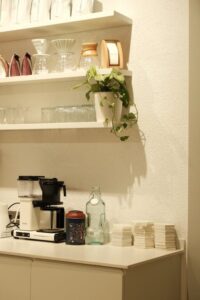
Keeping a busy household running smoothly can be a challenge, especially when juggling appointments, school activities, chores, and meal planning. One of the best ways to stay organized and ensure everyone is on the same page is by setting up a family command center. This dedicated space serves as the hub of your home’s communication and planning, helping reduce confusion and streamline daily tasks.
In this post, we’ll walk you through practical steps to create a family command center that fits your household’s needs. Let’s get started!
What Is a Family Command Center?
A family command center is a designated spot in your home where you keep important information, calendars, to-do lists, mail, and reminders. It acts like a home office or control panel to help everyone in the family know what’s happening day to day.
Whether you have a sprawling kitchen wall, a hallway nook, or just a bulletin board on the fridge, the command center keeps everything visible and easy to access.
Benefits of Having a Family Command Center
– Improved communication: Everyone knows schedules and commitments at a glance.
– Reduced stress: No more last-minute scrambling or lost notes.
– Better time management: Keeps track of appointments, deadlines, and chores.
– Centralized info: Phone numbers, menus, and reminders all in one place.
– Encourages responsibility: Kids can check their activities and chores.
Step 1: Choose the Perfect Spot
Look for a high-traffic area your family passes through regularly. Common options include:
– Kitchen wall or pantry door
– Mudroom or entryway
– Hallway or staircase landing
The location should be visible and convenient for everyone to access daily.
Step 2: Gather Your Tools and Supplies
Depending on your space and preferences, consider these items:
– Large calendar (dry-erase or magnetic)
– Corkboard or bulletin board
– Clipboards or file holders for papers
– Chalkboard or whiteboard for notes
– Hooks for keys or bags
– Storage bins or baskets
– Pens, markers, and sticky notes
– Labels or printed sections for organization
You can buy a ready-made kit or assemble your own using affordable items from office or home goods stores.
Step 3: Plan the Layout
Think about what your family needs to keep track of most frequently. Common sections include:
– Calendar: For appointments, school events, and extracurriculars.
– To-Do Lists: Chores, grocery lists, or errands.
– Mail/Important Papers: Incoming mail, permission slips, bills.
– Meal Planning: Weekly menus or recipes.
– Notes/Reminders: Quick messages or important alerts.
– Keys/Essentials: Hooks or bowls for keys, sunglasses, masks.
Sketch a simple layout before mounting to make sure everything fits and flows nicely.
Step 4: Set Up Functional Sections
Calendar
Choose a calendar big enough for clear visibility. Assign color codes for family members or event types to make it easy to read. Update it weekly with appointments, school holidays, and activities.
Mail and Paperwork
Use file holders or magazine racks to sort incoming mail. Label slots for bills, school forms, or invitations. Make it a habit to check and declutter these files regularly.
To-Do and Chore Lists
Create a visible list that family members can contribute to and check off tasks. Magnetic dry-erase boards work well for this. Rotate chores weekly and assign responsibilities clearly.
Meal Planning
Display your weekly menu or grocery list. This section helps with shopping and reduces last-minute meal stress. You can use dry-erase boards or printable templates.
Notes and Reminders
Keep a corkboard or whiteboard for quick messages, weekly goals, or inspirational quotes. This helps keep motivation up and lines of communication open.
Keys and Essentials
Add hooks or a small bowl for keys, wallets, or face masks so you never misplace them on busy mornings.
Step 5: Make It a Habit
The command center is only effective if your family uses it. Encourage everyone to:
– Check the calendar daily
– Add new appointments or notes as soon as possible
– Update to-do lists and cross off completed tasks
– Sort mail and paperwork regularly
– Review meal plans ahead of time
Set a weekly family check-in, maybe on Sunday evening, to update schedules and to-do lists together.
Tips for Success
– Keep it simple and clutter-free
– Use labels and color coding for easy navigation
– Involve the kids – let them personalize their section
– Upgrade and adjust as your family’s needs change
– Make it a visible and welcoming part of your home décor
Final Thoughts
A family command center is a fantastic way to bring order and calm to the daily whirlwind of family life. By dedicating a small space and a bit of time to organizing schedules, chores, and important info, you’ll help everyone stay informed and reduce stress. Start small and customize as you go!
Ready to create your own family command center? Gather your supplies and pick your spot today. Your busy family will thank you!





